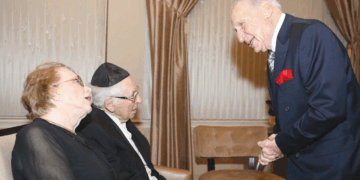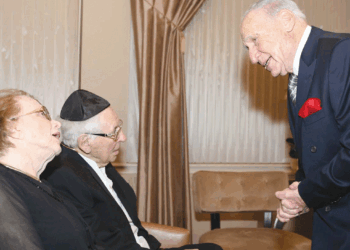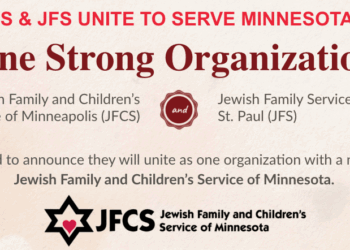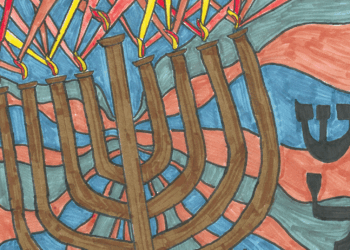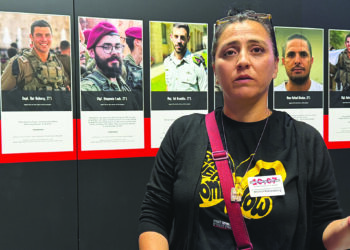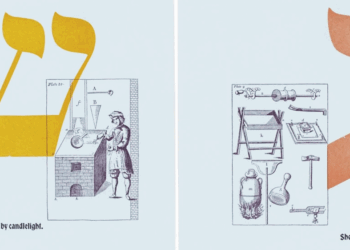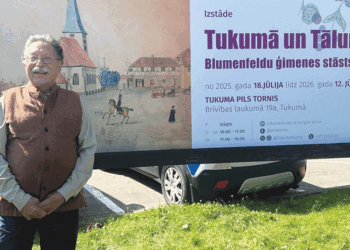By CNAAN LIPHSHIZ
AMSTERDAM (JTA) — More than 70 years have passed since Meijer van der Sluis first laid eyes on the love of his life. He was at a home for child survivors of the Holocaust, and he opened the door for her.
He still remembers her short haircut and exactly what she wore that day.
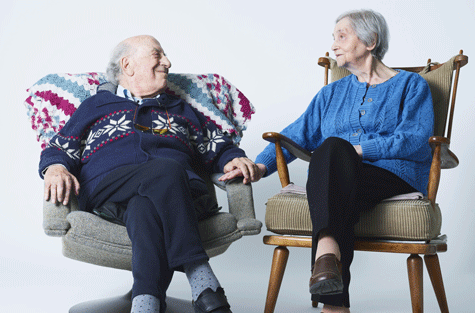
“It was a black army coat,” van der Sluis, 91, of Amsterdam, recalls in a critically acclaimed documentary that aired last month in the Netherlands about his wife of 65 years, Tedje.
“It hit me hard. I fell in love. It glowed inside me,” he says of their meeting in 1945, when both were teenagers.
Seven decades later, the couple’s heartwarming story has been featured in media across the country because it’s moving, intimate and dramatic. But its intensity also personifies the collective trauma of a community that was hit worse than any other in Western Europe during the Holocaust, when the Nazis killed 75 percent of Dutch Jews.
Throughout the hourlong film titled Tedje & Meijer: The Promise of Love, the two nonagenarians hug, kiss, rub noses and joke as they sit with their arms intertwined, each spouse with one palm on the other’s knee. They call each other “poepie,” or “sweetie” in Dutch, among other terms of endearment.
Their children, Ruben and Mirjam, tell the camera that their father cannot function when his wife is ill. Mirjam says he “becomes depressive.”
When he was working, Meijer would come home for lunch every day — an unusual habit in a country where lunch breaks are typically brief and feature room-temperature sandwiches at the workplace. But it wasn’t to be with the children, Mirjam says.
“I think it’s because they couldn’t spend an entire day apart,” she says of her parents.
“As long as I see Tedje around I’m happy, I’m glad,” Meijer says in the documentary. “Tedje has made me complete.”
While the couple love their children, their love for each other “was so strong, so intense” when the kids were growing up “that there was actually no space for anyone else between them. Not even their children,” Mirjam says.
But what begins as a documentary about the effects of an unusual family relationship evolves into an exploration into the tragic root of the special bond between the spouses — and the tragedy’s effects on at least two generations of Dutch Jews.
Formally, the home where the couple met was a high school called GICOL, for those whose secondary education was interrupted because of World War II. In reality, however, it functioned as an orphanage for Jewish children who survived in hiding while their entire families were murdered in the Holocaust.
“We had, of course, lost everyone,” Meijer says in the documentary, which was produced by the Jewish programming division of the EO public broadcaster. “Almost all of us were orphans; we lost our entire families.”
He hid in the attic of his Amsterdam home when the Nazis took away his sister and parents; they all would be murdered. Meijer and his older brother survived the rest of the war hiding north of Amsterdam. His greatest regret in life is not being able to save his sister, as he says in the documentary.
“We had no home, nothing. No one we had known was alive,” he says.
Tedje was 12 when her father and sister were taken to the Westerbork concentration camp, and later to Auschwitz. She was arrested later and asked to be sent there, too. But she was sent to another camp, and from there to Auschwitz. Her mother had died before the Holocaust, when Tedje was 8.
In one of the many articles written in the mainstream media about the film, its maker, Heleen Minderaa, told the NRC Handeslblad daily that being alone in the world had a defining effect on the relationship between Meijer and Tedje, whose real name is Rika. (Her father had nicknamed her his “teddy bear,” a nickname she adopted in adulthood, introducing herself as Tedje.)
“How they became intertwined is probably connected to their uprooting during the war,” Minderaa says. Their apparent inability to be without one another “feels like a solution to their problem of not belonging anywhere anymore. They ground one another.”
Meijer says he used to feel the need to “offset the pain caused to his wife.” But, he adds, the desire is “naive.”
“It’s not something I could hope to do, I realize now that I am old,” he says.
Mirjam, the couple’s daughter, sees their partnership as a pact.
“They agreed that they were moving forward and were going to make something good out of it all,” she says. “They promised that to one another.”
Meijer says of his two children: “We’ve tried not to pin an Auschwitz identity on them. We tried not to be like those people who always talk about the persecution, about Auschwitz.”
But as with many Holocaust survivors whose entire family was murdered, moving forward from the Holocaust has proven to be an uphill battle.
“It felt like every night around the dinner table, Auschwitz was sitting with us at the table for a bite to eat,” Mirjam says. Birthday parties featured “a five-minute talk about the weather, three minutes about food and for the rest it was the war.”
At least once a week, Meijer would note the birthday of some relative who was murdered.
When Mirjam painted on her arm once, her mother asked her to stop because it made her “uncomfortable” — it reminded her of the tattoo of a number that the Nazis gave her at Auschwitz.
Ruben, the couple’s son, became a rabbi but moved to Zurich.
“In Dutch Jewry there’s a constant preoccupation with the Holocaust that I found suffocating and needed to get away from. Synagogues weren’t destroyed the same way there,” he says of Switzerland, which the Germans did not occupy. “It feels more comfortable.”
Back in Amsterdam, Meijer and Tedje give talks at school about the Holocaust.
“It’s not a happy story I’m about to tell you,” Meijer tells the students in his introduction. “But it does have a happy end. We’re the happy end.”

